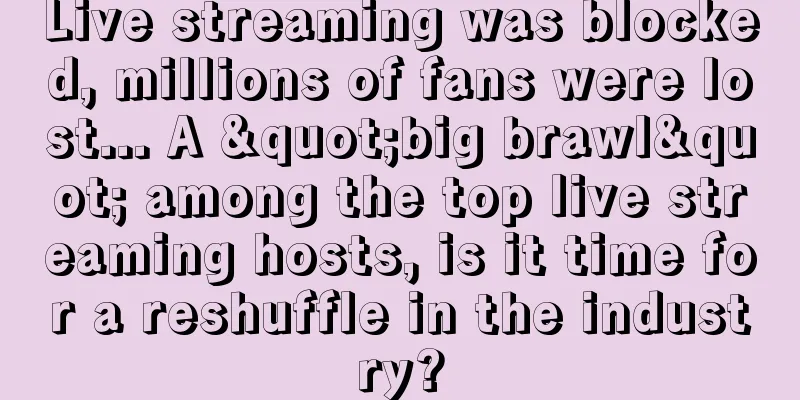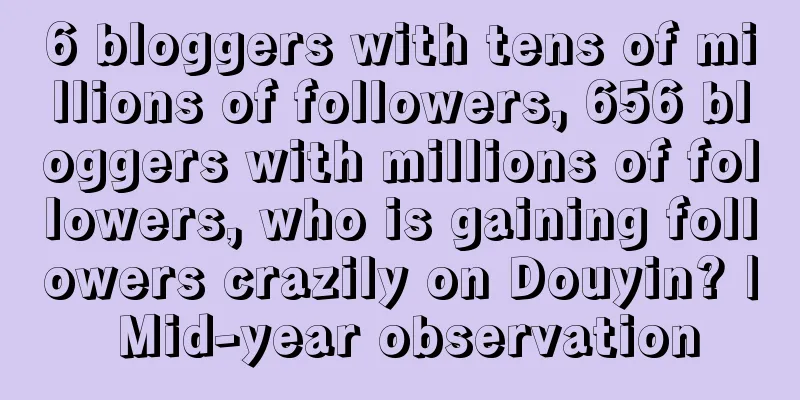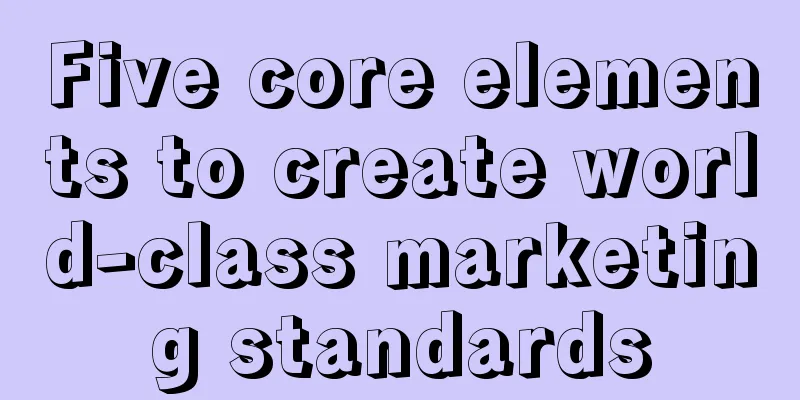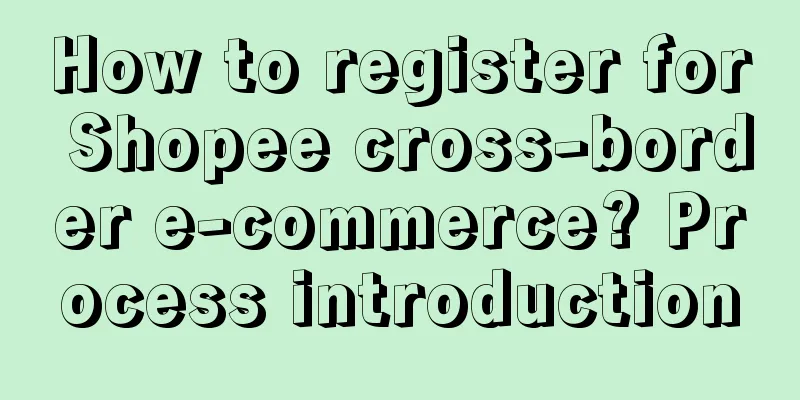How does WonderLab establish its dominance in the “meal replacement shake” market with a new product?

1. Brand BackgroundIn 2019, WonderLab quickly entered the market with a meal replacement shake. At that time, many people on the market did not know what meal replacements were. What are meal replacements? They are foods that can replace part or all of a regular meal, including meal replacement powders, meal replacement shakes, etc. They are high in fiber, low in calories, and easy to fill up. You can drink them by mixing them with hot water, which will keep you from feeling hungry for hours. (You can also think of them as the adult version of rice cereal.) In April 2020, WonderLab and HEYTEA jointly launched the "milk tea that won't make you fat", redefining the meal replacement shake as a light and healthy meal replacement drink, which quickly became popular. With this hit product, WonderLab has established its dominance in the "meal replacement milkshake" category, and has launched a variety of flavors of meal replacement milkshakes in succession, and has strengthened its brand awareness through large-scale and high-frequency launches. Whenever WonderLab is mentioned, consumers often think of “big fat bottle + royal blue color + milk tea flavor + meal replacement milkshake”. Source: [Magic Mirror Market Intelligence] WonderLab Market Insight Analysis Report 2022 II. Project BackgroundIt is speculated that this is a new product that is promoted and planned by a brand manager, because judging from WonderLab's recruitment needs, the brand manager needs to be responsible for the launch and promotion effect of the new product. This product will be launched in June 2022. After continuous financing, WonderLab is in urgent need of achieving rapid growth by expanding its product categories to respond to investors' expectations. Judging from the upper level category of meal replacement products, "healthy and nourishing products", if Wonderlab wants to expand its product categories, it can start with the following categories: Image source: [Tencent] Health and Nourishing Whole-Area Management Manual and Operation Guidelines Therefore, based on the original meal replacement shakes, they quickly launched new products in various categories to test categories with potential to become hits. This new product planning is tested by developing a new product line: "Dietary Fiber Fruit Extract Powder". The categories covered by WonderLab are as follows: In terms of product sales, this product currently has a total sales volume of 300,000 (Tmall flagship store data), ranking among the top 3 stores. It is relatively successful in expanding product categories, helping consumers get rid of the inherent impression that Wonderlab = meal replacement shakes and increase category associations with [dietary fiber powder]. Therefore, it can be said that this is a relatively successful case of [expanding product categories] through new products. III. Project ObjectivesIn order to achieve rapid growth, in addition to considering category expansion, we must also consider the preferences of target users. Because WonderLab's target users are young people, it needs to cater to young people's preferences and aesthetics, focus on [taste/category innovation], and use "novelty" to stand out. 4. Product Core StrategyBecause the brand value is: scientific + informative + nutritious, it is necessary to make good product strategy planning in terms of product attributes, sub-categories, quality, and functional/emotional benefits. For example, when interpreting the [brand value] of this product, it may have been defined as follows (inferred from the product selling point, without verifying with the brand): Product attributes must be substantial: The main feature is that the quantity is large enough, with 4 times the national standard dietary fiber, 10 kinds of vitamins and minerals, and 45 kinds of fruit and vegetable nutrients The subcategories should be nutritious: the subcategories of health care products, namely: health food - meal replacement food - meal replacement drink - fruit-flavored meal replacement drink Product formulas should be scientific: The promotion level should focus on scientific endorsement, such as listing various patents, technologies, and various data sheets on the details page and short videos Functional benefits (content = fullness): I don’t know how much fruit and vegetable nutrition is added, but with so much dietary fiber added, it’s likely that you’ll feel full. Haha Emotional interest points (with ingredients = lots of fun flavors): barley green juice, mango yellow peach, rose, green orange lemon, honeydew melon, prune elderberry, etc. 5. Execution Highlights Analysis1. Product status analysis1) Three-circle analysis (industry background + consumer + competitive product analysis) (1) Industry background analysis
(2) Consumer demand analysis User group type: The user group can be divided according to two factors, one is gender and the other is age. Because for health foods, these two are the basic conditions for dividing the body's needs. They can be divided into several categories: urban beauties, fashionable fairies, small town beauties, self-disciplined men, and silver-haired trendsetters (5 types). Characteristics of user groups:
This product can cover the following user needs:
*Supplement: The following are the types of user needs covered by nourishing products: Image source: [Tencent] Health and Nourishing Whole-Area Management Manual and Operation Guidelines Image source: [Tencent] Health and Nourishing Whole-Area Management Manual and Operation Guidelines (3) Analysis of competition landscape and competitive strategies What user groups do competitors cover? In addition to emerging brands, fitness and health apps including Keep and Mint Health have also extended their business lines to meal replacement categories, which shows that self-disciplined men are a user group that has been covered. Analysis shows that women aged 25-39, consumers living in first-tier cities and high-income consumers are more likely to consume different meal replacement products and maintain their consumption habits. Therefore, it can be judged that urban beauties may be a user group that is covered on a large scale. Therefore, from the perspective of the meal replacement category, silver-haired trendsetters (meal replacements generally do not emphasize absolute efficacy) and fashionable fairies (meal replacements do not taste very good) may be incremental users (with great potential). The high-spending group is definitely a battleground, and the urban beauty group is the main target group because they are willing and can afford long-term consumption, and their lifestyle allows them to develop the habit of meal replacements (they are usually busy and don’t have time to cook like many people). 2) Product architecture model analysis Based on the consumer's goal of [delicious + meal replacement + basic nutritional guarantee], we can reorganize the elements based on the following three elements: (1) Technology/patent Highlight the degree of nutrition retention and the warmth of the taste (from the perspective of taste, this point is quite outstanding) (2) Raw materials There doesn’t seem to be much to like about the raw materials, but the taste is definitely something I haven’t seen on the market, and the colors of different fruits put together do have a “rainbow” visual association (it feels like a spring eyeshadow palette). (3) Packaging The rainbow + healthy color packaging goes well with fruits and vegetables and satisfies the desire to share in the circle of friends. 2. Product development planning and analysis1) Product positioning analysis (1) Consumer demand
(2) Personal characteristics
(3) Common attributes of competing products
(4) Product positioning
2) Product pricing analysis The price of similar competing products (solid meal replacement drinks) is around 50 to 80 yuan. Judging from the factory quotation of 1688, assuming the profit margin of this product is 60% (how come the profit margin is higher than that of wine), the cost is about 33 yuan, which is roughly the price range shown below. Therefore, it can be basically judged that this product is a high-premium product. 3) Product naming analysis This naming method indicates that the product has no actual effect, so the Industrial and Commercial Bureau will not agree to print names such as weight loss/appetite control on it. Therefore, it can only be highlighted from the naming:
4) Product advertising slogan analysis The creative direction of this slogan has risen to the emotional level, namely: to color life. Using the color of the fruit to give the product a new concept is worth learning from. For example, pink (rose) + green (green juice) + yellow (mango) can create the concept of a rainbow. Rainbow = healing = light up the table = color your life. 5) Summary of product development planning ideas First, the product solves the pain point of consumers, that is, they are worried about gaining weight. Drinking it can control their appetite. The specific problem it solves is not analyzed in detail compared with the advantages of competing products. Second, the product is mainly designed to solve the problem of meal replacement for female groups such as urban beauties and fashion fairies. Third, the scale of China's dietary health market will increase to 536.7 billion yuan in 2021. Fourth, in addition to meal replacement powders, people are also actively accepting other solutions, such as protein bars. Fifth, why can this product competition plan win in the market competition? -- A variety of fruit and vegetable flavors. Sixth, in what scenarios will users trigger real emotions? -- When they want to drink juice, they think that they can fill their stomachs at the same time. Seventh, when a user encounters a problem, which name will he think of? —Fruits and vegetables/juice. 6. Summary of Playing Style1. In this project, what product planning ideas are worth reusing?Functional aspects: The combination of multiple materials + super-quantity formula is an innovative approach. For example, this time it wins by quantity through 45 kinds of fruit and vegetable nutrients + dietary fiber that is 4 times higher than the national standard. Promotion: An innovative product concept can be created by combining multiple elements. For example, product color (pink + yellow + green) = rainbow = healing = light up the dining table = color your life. 2. If you take the initiative to propose a new product planning from a brand perspective, from which angles would you sort out the product planning plan?I might first consider entering a user group that is not targeted by competing products, and developing products that meet the aesthetics/preferences/values of this user group. Starting from the product concept, work backwards to determine what product attributes are needed, and then work backwards to determine the product packaging concept. For example: If I were to plan this product, I might first target a more niche group within the user group of "Fashion Fairies": "Nail Art Enthusiasts". Then develop products that meet the needs of such users to "take close-ups of their hands at the dining table" - From this, I can deduce a product concept: not only satisfy my "stomach", but also satisfy my "hands". In terms of promotion strategy, we can use this topic to: The elegant gesture of the hands → Meal replacement should also be elegant → Make the busy life elegant Product attributes may include:
Finally, the product packaging concept was deduced: there are Korean, Japanese, European and American styles, which together represent different styles/attitudes for each person. Propose " Meal replacements should also have your own personalized style ." ——Different color combinations have different food ideas: Cool black mulberry topping/milky apricot almond topping/Japanese cherry blossom topping? Author: Ye Ma Fan, WeChat public account: Ye Ma Fan |
>>: How does a copywriter become a profiteer?
Recommend
Without pre-sales, what’s the point of 618?
This year's 618, Taobao and other platforms ha...
10 pitfalls that ordinary people will fall into when starting an e-commerce business
Based on personal experience, the author of this a...
Bawang Chaji is on the left, Chayan Yuese is on the right
Cha Yan Yue Se’s strategic map has expanded again....
AI writes articles with more than 100,000 views, relying on these secrets
In the digital age, AI technology is gradually pen...
What are the three types of Amazon keywords? Where should I write the keywords?
Amazon keywords are words related to products that...
What happens if Amazon is complained about for using someone else's pictures? What should I do if I am complained about?
In the field of e-commerce, Amazon's platform ...
This copywriting is very bitter.
Recently, a new brand, But Lab, launched a coffee ...
Why I think Lei Jun will launch a 99,000 yuan "Redmi car"
In the past two days, Lei Jun launched the Xiaomi ...
The reputation of “giving gifts” started off strong but ended up declining. Will it become a “holiday limited” feature of WeChat?
Since the grayscale test of WeChat's "Sen...
Douyin business interview track is not a good business
In the wave of short video development, every play...
Young people waiting for the holidays began to frantically "stock up on tickets"
In the new year, young people who have recovered f...
How to promote Amazon as a new seller? Newbie Promotion Guide
Amazon is one of the world's largest e-commerc...
“The next DeepSeek”? Manus hasn’t woken up Silicon Valley yet
The emergence of Manus has caused a stir in the do...
The most difficult 618 in history, who makes money by selling goods on B station
The cost of acquiring traffic on e-commerce platfo...
Can Shopify invest in traffic? What is Shopify's traffic diversion method?
There are still many merchants opening stores on t...









